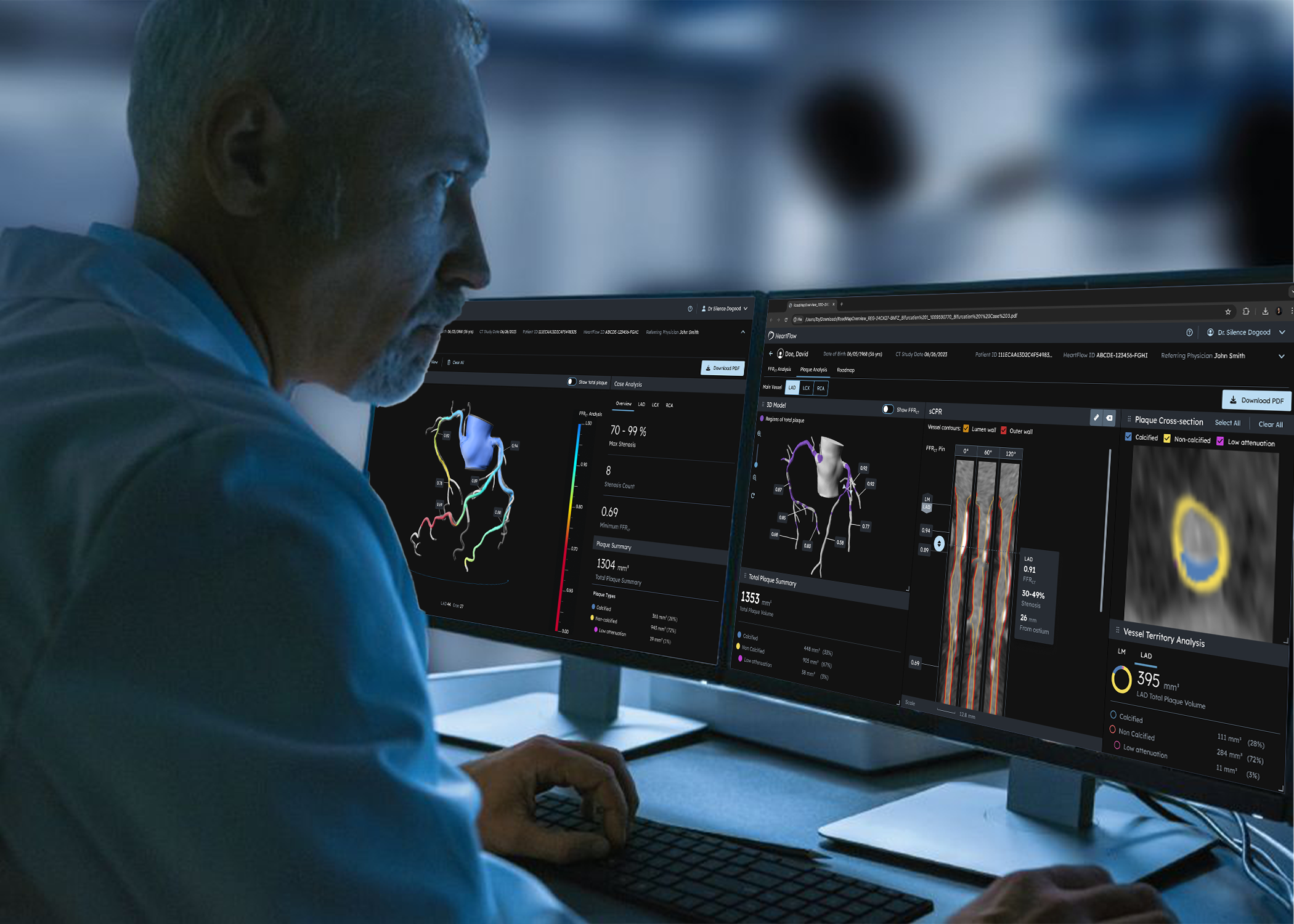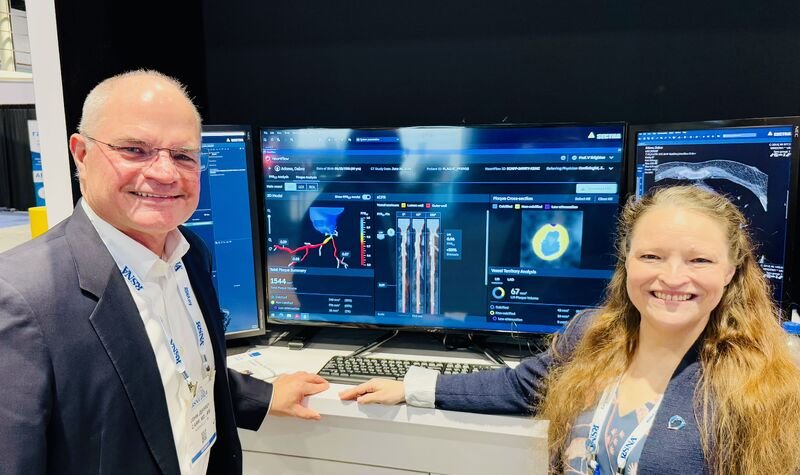Impact
At HeartFlow, I spearheaded the development of a scalable design system within three months, collaborating with an external vendor to streamline design deliverables and accelerate time to market. Leveraging this system, I successfully designed and launched Plaque Analysis in just six months—a breakthrough product with a $6 billion total addressable market, impacting 126 million lives.
Role
Lead Product Designer
Year
2024
Duration
6 months
Deliverables
Card sorting
Design Thinking Workshop
User testing
Conceptual designs
Prototypes
Usability testing
Final UI specs
Team
Product manager, program manager, medical affairs, regulatory, clinical affairs, external design firm, HFE firm and engineering team
Software and tools
Figma, Usertesting.com, Photoshop and Miro
HeartFlow Plaque Analysis web application
The HeartFlow Plaque Analysis is an innovative web application that integrates advanced plaque quantification and FFRCT technology. My focus was on creating an intuitive interface that enables clinicians to visualize and assess coronary artery disease risks by analyzing plaque types and volumes. The design optimized clinical workflows, improved diagnostic accuracy, and enhanced treatment planning. The solution not only drove better patient outcomes but also increased adoption by clinicians through its accessibility and ease of use.
The Vision
The vision for HeartFlow's Plaque Analysis was to create an intuitive, clinically relevant tool that empowers healthcare providers to make precise, data-driven decisions in managing coronary artery disease. By integrating advanced plaque quantification, 3D visualizations, and FFRCT technology, the design aimed to simplify complex data, enhance diagnostic accuracy, and personalized treatment plans. The goal was to streamline workflows, improve patient outcomes, and make the technology accessible, ensuring widespread adoption among clinicians for better, faster decision-making.
My Role
As the Lead Product Designer for the HeartFlow, I’m responsible for designing the design strategy, user interface design, 3D model visualization of plaque types, 3D model interaction design and delivering UI specifications for the HeartFlow Plaque Analysis web application.
The Challenge
The project required balancing high usability standards, regulatory compliance, and tight engineering deadlines. The application needed to support complex clinical workflows while being intuitive for cardiologists with varying technical expertise. Additionally, we needed a scalable design system to ensure efficiency and maintainability as the product evolved.
Problem Statement
Clinicians need a streamlined, accurate, and user-friendly tool to assess coronary artery disease risk by analyzing complex plaque data, including its type, volume, and potential impact. Existing systems often lack intuitive interfaces, seamless integration with diagnostic technologies like FFRCT, and sufficient accessibility to accommodate diverse clinical expertise. How can we create design a scalable, accessible application that not only enhances diagnostic precision and treatment planning but also integrates effortlessly into clinical workflows to improve patient outcomes?
The Framework
To ensure the product met the real-world needs of CT readers, I took a user-centered approach, engaging with clinicians at every stage of development to validate workflows, refine usability, and accelerate product development. A scalable enterprise design system was established to ensure consistency, accelerate development, and support the product’s clinical accuracy and usability goals.
Understanding the user needs
I conducted contextual inquiries with internal subject matter experts, commercial team and Product Manager to understand the user needs, goals and use cases. I transformed the insights into user personas and user requirements. Insights from these activities were shared with the program team, shaping feature prioritization and development to address key user challenges, including 3D visualization, diagnostic integration, and workflow efficiency.
Design thinking workshop
I facilitated a virtual design thinking workshop in Miro with users, employing card sorting to define the application’s information architecture and clinical workflow. This method structured the app’s layout, clinical labels, and information hierarchy, ensuring alignment with user needs and mental models for improved usability and workflow efficiency.
3D Visualization Enhancements
To improve plaque visualization, I collaborated with engineers to create an interactive model. We conducted multiple rounds of color testing with CT readers, refining the plaque color schemes to enhance diagnostic accuracy and user comprehension.
Enhancing color accessibility for plaque visualization
During formative testing, users with red-green color blindness struggled to identify low attenuation and non-calcified plaque due to color confusion. We explored high-contrast color overlays for plaque types and conducted A/B testing to identify the best color combination. This allowed users to clearly differentiate high-risk, low-attenuation plaque from other plaque types, improving accessibility and diagnostic accuracy.
Design Review
Implemented a design review process that cut the feedback loop by 40%, improving team efficiency. By streamlining feedback collection and prioritizing key insights, the process allowed for faster iterations, better collaboration, and a stronger focus on delivering a high-quality product.
Accurate risk assessment and personalized care
Heartflow's Plaque Analysis represents a significant advancement in proactive care for CAD. When ordering a CCTA for patients, clinicians can include Heartflow Plaque Analysis to enhance their diagnostic confidence and potentially improve patient outcomes through tailored treatment strategies.
“Plaque Analysis can actually help guide our treatment by identifying high risk plaque components…It’s treating the whole patient and their overall risk, not just the one component of that risk.”












